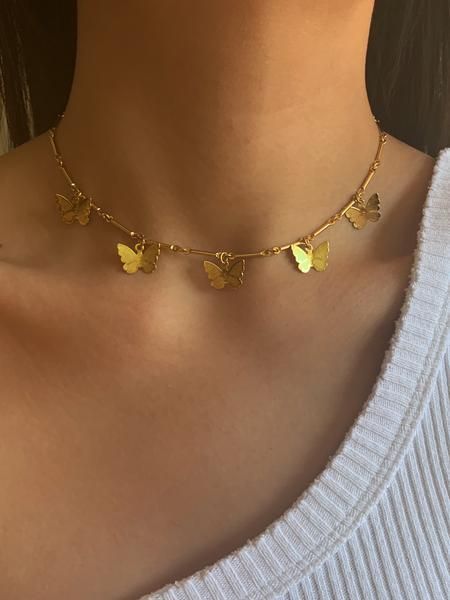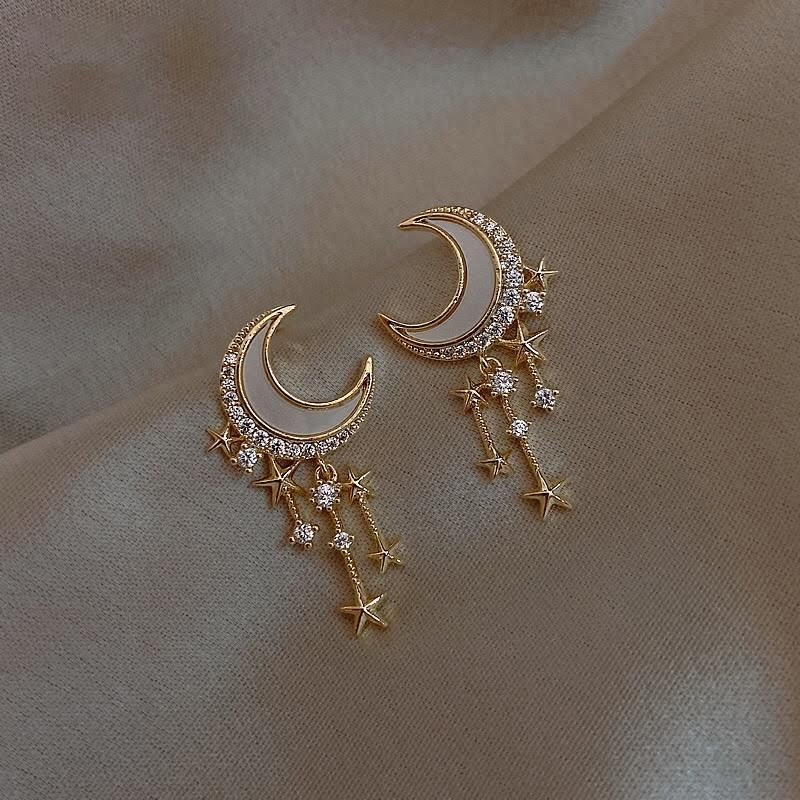Keeping your jewelry clean is not only about maintaining its beauty and shine, but also about preserving its value and longevity. Over time, dirt, oils, and other substances can build up on your favorite pieces, causing them to lose their luster and even become damaged. Regular cleaning is essential to remove these impurities and keep your jewelry looking its best.
While there are various commercial jewelry cleaning products available in the market, many of them contain harsh chemicals that can be harmful to both your jewelry and your health. Not to mention that they can be quite expensive as well. That’s why making your own jewelry cleaner is a better option.
By creating your own DIY jewelry cleaner, you have more control over the ingredients used and can ensure that it is safe for all types of jewelry. Plus, it can save you money in the long run.
In this article, we will guide you through the process of making your own jewelry cleaner solution using simple yet effective ingredients found in your pantry or local grocery store. So let’s dive in and learn how to make your own jewelry cleaner at home.
Common Jewelry Cleaning Methods and Their Drawbacks
Jewelry is not only a beautiful addition to any outfit, but it also holds sentimental value for many people. To keep your jewelry looking its best and preserving its shine, regular cleaning is essential. There are several common methods for cleaning jewelry, but each of them has its drawbacks.
One popular method is using commercial jewelry cleaners that can be found in stores. These cleaners often contain harsh chemicals that can be harmful to both the environment and your jewelry. Additionally, they may leave residue behind on your jewelry after cleaning, which can dull its shine and potentially cause skin irritation.
Another common method is using warm soapy water to clean your jewelry. While this method is less harmful than using commercial cleaners, it may not be effective at removing stubborn dirt and tarnish. The process of scrubbing the jewelry with a toothbrush can also be abrasive and potentially damage delicate pieces.
Ultrasonic cleaners, which use high-frequency sound waves to create bubbles that agitate the dirt off the surface of the jewelry, are another option. While these cleaners can be effective at removing dirt from hard-to-reach places, they are not suitable for all types of jewelry. For example, gemstones like emeralds or opals can become damaged in an ultrasonic cleaner.
Overall, these common methods have their drawbacks and might not provide you with the results you desire. However, there is a better option – making your own jewelry cleaner.
Not only will this save you money in the long run, but it also allows you to control the ingredients used and tailor the cleaner to the specific needs of your jewelry. In the next section, we will explore why making your own jewelry cleaner is a better option and how to do it effectively.
Why Making Your Own Jewelry Cleaner is a Better Option
While there are various methods available for cleaning your jewelry, making your own jewelry cleaner is a better option for several reasons. Not only is it cost-effective and convenient, but DIY jewelry cleaner also allows you to have control over the ingredients used, ensuring that your precious pieces are properly cared for. In this section, we will explore why making your own jewelry cleaner is a better option and the advantages it provides.
Control over Ingredients
One of the main benefits of making your own jewelry cleaner is having complete control over the ingredients used. Many commercial jewelry cleaners contain harsh chemicals that can be damaging to certain types of metals or gemstones.
By creating your own cleaner, you can choose gentle and natural ingredients that will effectively clean your jewelry without causing any harm. Common household items like baking soda, dish soap, vinegar, and lemon juice can be combined to create a safe yet powerful cleaning solution.
Cost-Effective Solution
Another advantage of DIY jewelry cleaner is its cost-effectiveness. Commercial cleaners can be expensive, especially if you have a large collection of jewelry that requires regular cleaning.
By using everyday household items to make your own cleaner, you can save money in the long run while still achieving excellent results. Plus, since these ingredients are readily available in most homes, there’s no need to make an extra trip to the store or wait for an online order to arrive.
Promotes Environmentally-Friendly Practices
By making your own jewelry cleaner, you’re also promoting environmentally-friendly practices. Commercial cleaners often come packaged in single-use plastic bottles that contribute to pollution and waste. Creating your own cleaner eliminates the need for excessive packaging and reduces environmental impact. Furthermore, since many DIY recipes use non-toxic materials found in nature instead of harsh chemicals harmful to the environment when disposed of improperly, they offer a more sustainable approach to cleaning your precious pieces.
Section
One of the advantages of making your own jewelry cleaner is that you have complete control over the ingredients used. This means that you can tailor the cleaner to suit the specific needs of your jewelry and avoid any harsh chemicals that may damage or tarnish it. To gather the necessary ingredients for your DIY jewelry cleaner, there are a few items you will need.
Firstly, you will need a mild dish soap or detergent. Look for one that is specifically labeled as mild or gentle, as these formulations are less likely to cause damage to your jewelry. Avoid using any soaps or detergents with added moisturizers or scents, as these can leave residue on your jewelry.
Additionally, you will need warm water. The temperature of the water is important, as hot water can potentially damage certain gemstones and metals, while cold water may not be as effective at removing dirt and grime from your jewelry.
To add an extra cleaning boost to your solution, you may choose to include ammonia. Ammonia is particularly effective at removing tarnish from silver jewelry. However, it is important to note that not all types of jewelry can handle exposure to ammonia, so it’s essential to check if it is safe for your particular piece before using it.
Finally, gathering a soft-bristle toothbrush and a polishing cloth or microfiber cloth will help with cleaning and drying your jewelry effectively without causing any scratches.
| Ingredients | Benefits |
|---|---|
| Mild dish soap or detergent | Gentle on jewelry; removes dirt and grime |
| Warm water | Effective at cleaning; does not damage most metals and gemstones |
| Ammonia (optional) | Effectively removes tarnish from silver jewelry |
| Soft-bristle toothbrush | Aids in gentle scrubbing and reaching difficult areas |
| Polishing cloth or microfiber cloth | Dries jewelry effectively without causing scratches |
Gathering the necessary ingredients for your DIY jewelry cleaner is a crucial first step before you can begin cleaning your precious pieces. By ensuring you have the correct ingredients and tools, you can proceed confidently and successfully clean your jewelry at home. Remember to consult the manufacturer’s instructions or a professional jeweler if you are uncertain about any particular piece of jewelry before using any cleaning solution on it.
Step-by-Step Guide
When it comes to cleaning your jewelry, making your own DIY jewelry cleaner solution can be a cost-effective and convenient option. Not only does it save you money, but it also gives you control over the ingredients used in the cleaning solution. This step-by-step guide will walk you through the process of formulating your own DIY jewelry cleaner solution.
First, gather the necessary ingredients for your DIY jewelry cleaner. Most homemade jewelry cleaners consist of common household items that are gentle yet effective in removing dirt and grime from your favorite pieces. You will need a small bowl or container, warm water, mild dish soap or liquid detergent, baking soda, and a soft-bristled toothbrush or cloth.
Next, start by filling the small bowl or container with warm water. Warm water helps dissolve any dirt or oils on the jewelry surface better than cold water. Be sure not to use hot water as extreme temperatures can damage certain types of gemstones or metals.
Add a few drops of mild dish soap or liquid detergent to the warm water. These gentle detergents help break down dirt and oils without causing any harm to your precious pieces. Avoid using harsh chemicals or strong cleaners as they can be abrasive and damaging to both metals and gemstones.
If you’re dealing with tougher stains or tarnish, mix in a small amount of baking soda. Baking soda acts as a natural abrasive that helps remove tarnish and stubborn grime from metal surfaces without scratching them.
Once all the ingredients are combined in the bowl, carefully place your jewelry into the solution. Gently swirl each piece around for a few minutes to ensure that all areas are cleaned thoroughly. For delicate pieces or those with loose gemstones, avoid agitating too much to prevent any damage.
After cleaning, rinse each piece under running tap water to remove any remaining residue from the cleaning solution. Pat them dry using a soft cloth or let them air-dry completely before storing them away.
By following this step-by-step guide, you can easily formulate your own DIY jewelry cleaner solution using simple household ingredients. Not only will your jewelry be sparkling clean, but you’ll also have the peace of mind knowing that you’re using a safe and gentle cleaning method.
Tips for Handling Different Types of Jewelry – Precious Metals, Gemstones, and Costume Jewelry
When it comes to handling different types of jewelry, it’s important to understand that each type requires specific care and attention. This is particularly true for precious metals, gemstones, and costume jewelry. Here are some tips to help you handle and clean these three types of jewelry effectively.
Precious metals such as gold, silver, and platinum require gentle treatment to maintain their luster. It’s recommended to use a soft cloth or a jewelry brush specifically designed for precious metals to clean them. Avoid using abrasive cleaners or brushes as they can scratch the surface of the metal. Additionally, be cautious when using ultrasonic cleaners on precious metal jewelry, as they can sometimes cause damage.
Gemstone jewelry can vary widely in terms of hardness and durability. For softer gemstones like opal or pearl, it’s best to avoid harsh chemicals or ultrasonic cleaners. Instead, use a mild soap solution with warm water and a soft brush to gently clean the gemstone. Harder gemstones like diamonds or sapphires can withstand more rigorous cleaning methods such as using a ultrasonic cleaner or steam cleaner.
Costume jewelry often consists of non-precious metals with plated finishes and synthetic stones. It’s essential to handle costume jewelry with care as rough handling can cause plating to wear off or stones to become loose. To clean costume jewelry, use a soft cloth dampened with water and mild soap solution. Avoid immersing the pieces in water, as this can damage the glue used to secure the stones.
Remember that regardless of the type of jewelry you’re handling, it’s always wise to store them properly when not in use. Use separate compartments or pouches for each piece of jewelry to prevent scratching or tangling. Additionally, avoid exposing your jewelry excessively to sunlight and moisture as these factors can accelerate tarnishing and deterioration.
By following these tips, you can ensure that your precious metals, gemstones, and costume jewelry stay looking their best for years to come.
Ultimate Cleaning Tips
Stubborn dirt and tarnish can be a common problem when it comes to cleaning jewelry. While regular cleaning can prevent this buildup, there may be times when your jewelry requires some extra attention. In this section, we will provide you with some ultimate cleaning tips to help you tackle stubborn dirt and tarnish on your precious pieces.
One of the most effective methods for removing stubborn dirt and tarnish from jewelry is by using a soft-bristle toothbrush. Firstly, mix a small amount of mild dish soap with warm water in a bowl. Gently dip your toothbrush into the soapy water and use it to scrub away any dirt or tarnish on your jewelry.
Be sure to pay attention to hard-to-reach areas such as grooves or crevices. Once you have thoroughly scrubbed the piece, rinse it under running water and pat dry with a soft cloth.
For particularly stubborn tarnish on silver jewelry, you can use a specialized silver cleaning solution. These solutions are designed to remove tarnish without causing damage to the metal. Simply apply the solution onto a soft cloth or sponge and gently rub it onto the tarnished areas of your silver jewelry. Afterward, rinse the piece under running water and polish with a clean cloth.
It’s important to note that not all materials are suitable for the same cleaning methods. Gemstones, for example, require special care as some cleaning solutions may damage their delicate surfaces. If you’re unsure about how to clean certain gemstones or other specific types of jewelry, it’s best to consult with a professional jeweler who can provide guidance tailored to your specific pieces.
| Ultimate Cleaning Tips | Data |
|---|---|
| Use a soft-bristle toothbrush | to scrub away stubborn dirt |
| Specialized silver cleaning solution | to remove tarnish on silver jewelry |
| Consult with a professional jeweler | for guidance on cleaning specific gemstones or materials |
The Dos and Don’ts of Using DIY Jewelry Cleaner
Using DIY jewelry cleaner can be an effective and affordable way to keep your precious pieces looking their best. However, it’s important to follow some dos and don’ts to ensure that you’re cleaning your jewelry safely and effectively.
DOs:
- DO read the instructions carefully: Before using any DIY jewelry cleaner, make sure you thoroughly read the instructions for creating the solution and using it on different types of jewelry. This will help you understand the recommended cleaning techniques and prevent any damage or harm.
- DO use a soft brush: When cleaning your jewelry, it’s important to use a soft brush, such as a toothbrush with soft bristles or a dedicated jewelry brush. This will help remove dirt and grime without scratching the metal or gemstones.
- DO rinse thoroughly: After cleaning your jewelry with the DIY solution, make sure to rinse it thoroughly with clean water. This will help remove any residue from the cleaning solution and prevent it from causing skin irritation or tarnishing.
- DO dry properly: After rinsing your jewelry, pat it dry with a soft cloth rather than rubbing it vigorously. Rubbing can cause scratches or loosen gemstones. You can also air dry it on a clean towel to ensure all moisture is gone before storing it away.
DON’Ts:
- DON’T use DIY cleaner on delicate gemstones: Some gemstones are more delicate than others and may not react well to certain cleaning solutions. Avoid using DIY cleaners on porous gemstones like pearls, opals, or turquoise as they may absorb liquids and get damaged in the process.
- DON’T scrub vigorously: While brushing is an essential part of cleaning jewelry, avoid scrubbing too hard as this can scratch softer metals or loosen prongs holding gemstones in place.
- DON’T leave jewelry in cleanser for extended periods: It’s important not to leave your jewelry submerged in the DIY cleaner for too long as this can cause damage. Follow the recommended time provided in the instructions, usually a few minutes, and remove the jewelry promptly.
- DON’T use DIY cleaners on plated or costume jewelry: Plated or costume jewelry typically has a thin layer of metal or colored finish that can easily be damaged by DIY cleaners. These types of jewelry should be cleaned with mild soap and water instead.
Following these dos and don’ts will help you clean your jewelry effectively while minimizing the risk of damage. Remember to always double-check the compatibility of the cleaning solution with your specific type of jewelry before proceeding.
Frequently Asked Questions about DIY Jewelry Cleaning
One of the common concerns when it comes to DIY jewelry cleaning is whether it is safe for all types of jewelry. Many people worry that homemade cleaners may damage or tarnish their precious pieces. However, with the right ingredients and proper techniques, DIY jewelry cleaning can be effective and safe for most jewelry types.
One frequently asked question about DIY jewelry cleaning is what ingredients can be used for different types of jewelry. For example, while natural ingredients like baking soda and salt are suitable for removing tarnish from metals like silver and gold, they may not be suitable for gemstones or delicate costume jewelry. In these cases, a gentle soap solution or mild vinegar solution can be used instead.
Another common concern is how often one should clean their jewelry using a DIY cleaner. The answer to this question varies depending on factors such as the type of jewelry and how frequently it is worn. As a general rule, it is recommended to clean your everyday pieces once every two weeks to remove dirt and oil buildup. However, for special occasion or fine jewelry that is worn less frequently, cleaning once every few months may be sufficient.
Lastly, many people wonder if there are any precautions or steps they need to take before using a DIY cleaner on their jewelry. It is important to note that certain metals may react differently to various cleaning solutions.
Before applying a DIY cleaner on your precious pieces, always do a patch test on a small area to ensure that there are no adverse reactions. Additionally, make sure to follow any specific guidelines or care instructions provided by the manufacturer when cleaning your jewelry.
Overall, DIY jewelry cleaning can be a cost-effective and convenient option if done correctly. By being aware of the right ingredients for different types of jewelry, understanding the recommended frequency of cleaning, and taking necessary precautions, individuals can safely maintain the beauty and shine of their favorite pieces without having to rely on professional jewelers.
Conclusion
In conclusion, making your own jewelry cleaner offers several benefits and advantages over other cleaning methods. Not only is it a more cost-effective option, but DIY jewelry cleaner also allows you to use natural and non-toxic ingredients, ensuring the safety of your precious accessories. By following the step-by-step guide provided in this article, you can easily create a customized cleaning solution that will effectively remove dirt and tarnish from your jewelry.
Another advantage of DIY jewelry cleaning is that it allows you to tailor the cleaning process to the specific materials and types of jewelry you own. Whether you have precious metals, gemstones, or costume jewelry, there are tips provided in this article for handling each type with care and ensuring their longevity. Using DIY cleaner gives you control over what goes into the solution, allowing you to avoid harsh chemicals that may damage certain types of jewelry.
Lastly, by regularly cleaning your jewelry using DIY cleaner, you are not only ensuring their sparkle and shine but also maintaining their value. Regular cleanings prevent dirt and tarnish from building up over time and causing permanent damage to your pieces. Additionally, proper maintenance can extend the lifespan of your jewelry and keep them looking as good as new for years to come.
Frequently Asked Questions
What is the best homemade cleaner for jewelry?
One of the best homemade cleaners for jewelry is a mixture of warm water and mild dish soap. This solution is effective in removing dirt, oil, and grime from various types of jewelry, including gold, silver, and gemstones. To use this cleaner, simply fill a small bowl with warm water and add a few drops of dish soap.
Gently submerge the jewelry into the solution and let it soak for a few minutes. Afterward, use a soft-bristled brush or toothbrush to scrub away any stubborn residue. Rinse the jewelry thoroughly under warm water and pat dry with a soft cloth.
What is the main ingredient in jewelry cleaner?
The main ingredient in most commercial jewelry cleaners is ammonia. Ammonia is an effective cleaning agent that helps dissolve dirt and grime from jewelry surfaces. It is particularly useful for removing tarnish from silver jewelry.
However, it’s important to note that using ammonia on certain delicate gemstones or pieces with porous components may cause damage or discoloration. Therefore, it is crucial to follow the instructions provided by the manufacturer if using a store-bought cleaner containing ammonia.
Does vinegar clean jewelry well?
Vinegar can be used as an effective cleaning agent for some types of jewelry, but its effectiveness varies depending on the specific materials involved. Vinegar’s acidic nature makes it especially useful for dissolving mineral deposits or tarnish on certain metals like brass or copper-based alloys such as bronze.
However, vinegar should generally be avoided when it comes to cleaning porous gemstones or fragile pieces since its acidity might damage them. Additionally, while vinegar can provide satisfactory results for some jewelry items, there are other more appropriate options available depending on your specific needs and preferences.

Welcome to my jewelry blog! My name is Sarah and I am the owner of this blog.
I love making jewelry and sharing my creations with others.
So whether you’re someone who loves wearing jewelry yourself or simply enjoys learning about it, be sure to check out my blog for insightful posts on everything related to this exciting topic!





